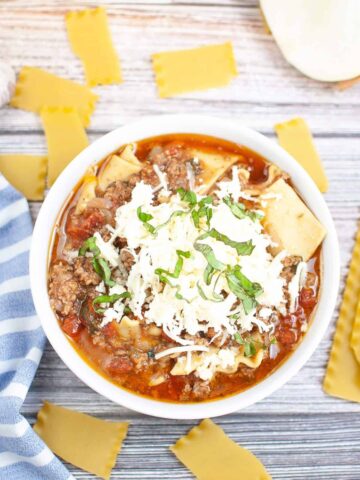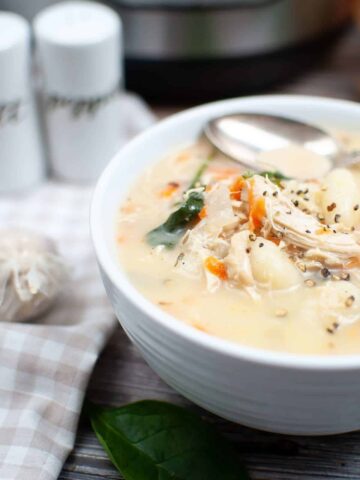If you're a fan of slow-cooking, you may be wondering if you can achieve the same results with your instant pot. The answer is yes, you can certainly slow cook in your instant pot, and it can even offer some added benefits over traditional slow cookers. In this article, we'll take a deep dive into all aspects of slow cooking in an instant pot, including how to use the function, differences between traditional slow cookers and instant pots, and troubleshooting tips for common issues. So let's get started!
Understanding the Instant Pot Slow Cook Function
Before we dive into how to use the instant pot slow cook function, let's first understand what it is. The slow cook function on an instant pot allows you to cook food at a low temperature, similar to a traditional slow cooker. The main difference is that the instant pot also allows you to pressure cook, sauté, and steam, giving you more versatility in the kitchen. Keep in mind that the slow cook function may take longer than other cooking methods, but it also allows for tender, flavorful results.
It's important to note that the slow cook function on an instant pot is not the same as the pressure cook function. While pressure cooking uses high pressure to cook food quickly, slow cooking uses low heat over a longer period of time. This makes it ideal for dishes like stews, soups, and roasts, where you want the flavors to meld together and the meat to become tender. Additionally, the slow cook function on an instant pot allows you to set the cooking time for up to 24 hours, giving you the flexibility to start a meal in the morning and have it ready by dinner time.
How to Use the Instant Pot Slow Cook Function
Using the slow cook function on an instant pot is quite simple. First, add your ingredients to the instant pot and select the 'Slow Cook' option. You can choose a low, medium, or high temperature depending on your recipe's needs. From there, you can adjust the cook time based on your recipe. It's essential to remember that the cook time will vary based on the temperature setting, the quantity of food being cooked, and the thickness of the ingredients.
One of the benefits of using the slow cook function on an instant pot is that it allows for more tender and flavorful dishes. The slow cooking process allows the ingredients to break down and meld together, resulting in a more complex and delicious flavor profile. Additionally, using an instant pot for slow cooking can save time and energy compared to traditional slow cookers, as the instant pot can also be used for pressure cooking, sautéing, and other cooking functions.
Benefits of Using the Instant Pot Slow Cook Function
There are several benefits to using the slow cook function on an instant pot. For starters, it adds an additional cooking option to your kitchen, allowing you to sauté, pressure cook, steam, and slow cook all in one appliance. Additionally, the instant pot can cut cooking time by up to 70%, even when using the slow cook function. Finally, the instant pot reduces energy consumption, which can save you money on your electric bill.
Another benefit of using the slow cook function on an instant pot is that it allows for more tender and flavorful meals. The low and slow cooking method breaks down tough cuts of meat and infuses flavors into the dish. This is especially useful for dishes like stews, soups, and roasts. Additionally, the slow cook function on an instant pot allows for hands-off cooking, freeing up time for other tasks or activities.
Differences Between Slow Cooking in a Traditional Crockpot and an Instant Pot
While both slow cookers and instant pots are designed to cook food slowly and at a low temperature, there are some differences between the two. For starters, an instant pot can do more than a traditional slow cooker, giving you more versatility in the kitchen. Additionally, the instant pot can cook food more quickly, even on the slow cook setting, than a traditional slow cooker. Finally, the instant pot allows you to lock in moisture and flavor, which can create more tender and flavorful results.
Another difference between the two is the pressure cooking feature that is unique to the instant pot. This feature allows you to cook food even faster than the slow cook setting, making it a great option for busy weeknights. Additionally, the instant pot has a sauté function, which allows you to brown meat or vegetables before slow cooking, adding an extra layer of flavor to your dishes.
However, traditional slow cookers have their own advantages. They are often more affordable than instant pots and have a simpler design, making them easier to use for those who prefer a more straightforward cooking experience. Slow cookers also come in larger sizes, making them a better option for cooking for larger groups or meal prepping for the week.
Best Ingredients for Slow Cooking in an Instant Pot
When it comes to slow cooking in an instant pot, there are some ingredients that work better than others. Generally, tough cuts of meat, such as beef brisket or pork shoulder, are ideal for slow cooking in an instant pot. Additionally, root vegetables, such as potatoes and carrots, work well in slow-cooked dishes. Finally, beans and legumes are excellent choices for slow cooking in an instant pot, as they can become tender and creamy over time.
It's important to note that not all ingredients are suitable for slow cooking in an instant pot. For example, delicate seafood or quick-cooking vegetables like broccoli or asparagus may become overcooked and mushy. It's also important to avoid adding too much liquid, as the instant pot retains moisture and can create a watery dish. By choosing the right ingredients and following a recipe, slow cooking in an instant pot can result in delicious and tender meals with minimal effort.
How to Convert Traditional Slow Cooker Recipes for Use in an Instant Pot
If you have a favorite slow cooker recipe, you can easily convert it for use in an instant pot. Start by following the same steps for preparing the ingredients. Then, adjust the cook time and liquid amount for the instant pot. Keep in mind that the instant pot will take less time to cook than a slow cooker, so it's crucial to adjust the cook time accordingly. Additionally, the instant pot requires less liquid than a slow cooker, so you may need to reduce the amount of liquid in your recipe.
Another important factor to consider when converting slow cooker recipes for use in an instant pot is the type of meat being used. Tougher cuts of meat, such as beef chuck or pork shoulder, are ideal for slow cooking, but may not be suitable for the instant pot. For these types of meats, it's best to use the slow cook function on the instant pot, rather than the pressure cook function, to ensure they become tender and flavorful.
Finally, it's important to note that not all slow cooker recipes can be converted for use in an instant pot. Recipes that require a lot of stirring or have delicate ingredients, such as seafood or pasta, may not be suitable for the instant pot. It's always best to do some research and read through the recipe thoroughly before attempting to convert it for use in an instant pot.
Tips for Achieving the Perfect Texture When Slow Cooking in an Instant Pot
When slow cooking in an instant pot, it's essential to pay attention to the texture of your food. To ensure the perfect texture, start by searing your meat before slow cooking it. This will add flavor and help to lock in moisture. Additionally, avoid overcooking your food, as this can result in tough, rubbery meat or mushy vegetables. Finally, use a natural release method when cooking dense or starchy ingredients to prevent overcooking and mushiness.
How Long to Slow Cook Different Types of Meat in an Instant Pot
The length of time required to slow cook meat in an instant pot varies based on several factors, including the thickness and quantity of the meat and the desired doneness. As a general rule of thumb, beef brisket and pork shoulder take around 8 hours to cook on low. Chicken thighs take around 4 hours on low, while a whole chicken can take up to 6 hours. It's essential to use a food thermometer to check the internal temperature of your meat, as this is the best way to ensure it's cooked thoroughly.
Troubleshooting Common Problems When Slow Cooking in an Instant Pot
Even with the best preparation, it's possible to encounter issues when slow cooking in an instant pot. One common issue is undercooked food, which can occur if the temperature setting is too low or the cook time is too short. Overcooked or mushy food can happen if the temperature is too high or the cook time is too long. Finally, the instant pot can encounter the 'Burn' error message if there isn't enough liquid in the pot or if food is sticking to the bottom. To avoid this, deglaze the pot after sautéing and ensure there is enough liquid to cover the food.
Conclusion
There you have it – everything you need to know about slow cooking in an instant pot. With the slow cook function, you can create tender, flavorful dishes with less energy consumption and faster cooking times. By following the tips above, you'll be a slow cooking pro in no time, and your taste buds will thank you for it!




Leave a Reply